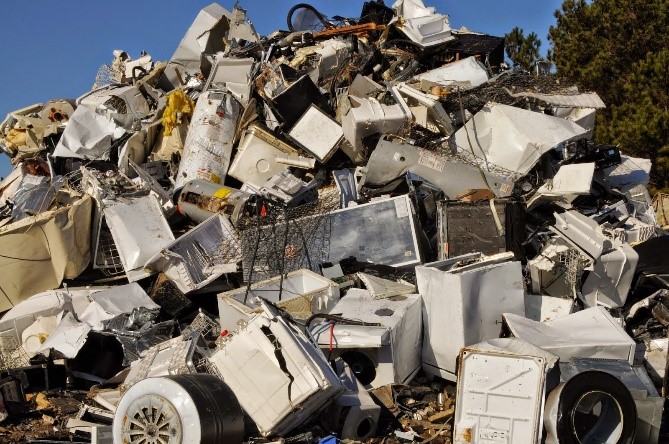 Would you be concerned if you bought a house that was only built to last five years? Yes, of course. You buy a house with the expectation it will last forever, or at least as long as you own it. What about purchases that go into your home? Do you expect dishwashers, microwave ovens, faucets, and smoke detectors to last a long time? Or weed eaters, coffee makers, DVD players, and TVs? Probably not. Although many have lasted 20 years or more, most no longer last more than a few years.
Would you be concerned if you bought a house that was only built to last five years? Yes, of course. You buy a house with the expectation it will last forever, or at least as long as you own it. What about purchases that go into your home? Do you expect dishwashers, microwave ovens, faucets, and smoke detectors to last a long time? Or weed eaters, coffee makers, DVD players, and TVs? Probably not. Although many have lasted 20 years or more, most no longer last more than a few years.
As longevity has gone down, the scope of repair has gone up. A minor auto “fender bender”, for example, has gone from fixing a dent to replacing entire sections of the car. Electronic devices are often replaced in their entirety rather than replacing their failed components. Even houses and buildings are scraped rather than restored or remodeled.
The life expectancy for many durable goods has shortened significantly. Many aren’t durable at all and approaching non-durable status. Statistics also show that businesses don’t last as long as they once did. The average company lifespan has gone from over fifty years in the 1960s to less than twenty years now. Things just don’t last as long as they once did.
Why the lower life expectancy? Are product innovations and technology advances the reason for frequent replacements? Maybe for computers and phones, but certainly not everything. Another factor is products are made cheaper. They are made of thinner metal, more plastic, and lower cost parts now than in years past.
The lower quality of goods is as obvious as it is frustrating for most, but are company cost cutting and lean initiatives the real cause? Is the reduced longevity of things the responsibility of the corporate villains who get blamed for all things companies do wrong? What about us? What about employees? People’s skills and attitudes? Could it be that after years of striving to do more with less that people have permanently adopted a “just get er done” mentality.
The just get er done mentality may be most obvious in service technicians and construction trades. There are exceptions for sure, but in general consumers no longer expect repairs to be done right the first time. It seems most require a second if not third visit. And when the time comes for maintenance or replacement, there is that costly discovery that little thought had been put into making things serviceable by whoever built or installed it the first time.
Perhaps the cost cutting mentality and getting things done as fast as possible has gone too far. In many cases the benefit of lower costs with more features is now outweighed by the latent costs of lower quality, frequent replacement, and more costly repair. Some organizations would delight their customers if they pursued a new strategy. If they refocused on providing quality. If they put costs back into products. If they provided the resources and time their employees needed to perform high quality work rather than continue to set lower standards for costs.
There are many examples of increasing costs and quality that produced great results. While Coleman was taking costs out of their portable coolers and selling them for less, Yeti put more costs into coolers and helped launch the premium cooler category. FedEx found success in competing with the US postal service by offering better service even though their service was substantially more expensive. There are countless boutique firms and niche providers that established themselves by providing better products with higher levels of service and quality.
While doing more with less and its associated mediocrity may be the standard for many people and organizations, it’s not for everyone. People and organizations who provide mediocrity are exposed to those who give customers new features, more performance, better service, and higher quality.
Be careful about buying into the mentality that customers place more value on the $20 savings than they do a full-size spare tire in their new car. Not all customers want that trade off. If you take the time to build something well, position it properly, and sell its value, there are many people who will buy it. There are quality conscious buyers.
Providing a cheap offering may be a viable strategy for those customers who just care about the cost of acquisition, but don’t follow the herd of cost cutting and lowering prices without considering the alternative. Don’t merely promote the get er done mentality without considering the impact on quality. There can be greater value attained by slowing down and taking the time to perform work, create products, and provide services that are better. Consider differentiating yourself as an employee and organization who rises above the mediocrity and invests the resources required to be excellent.
